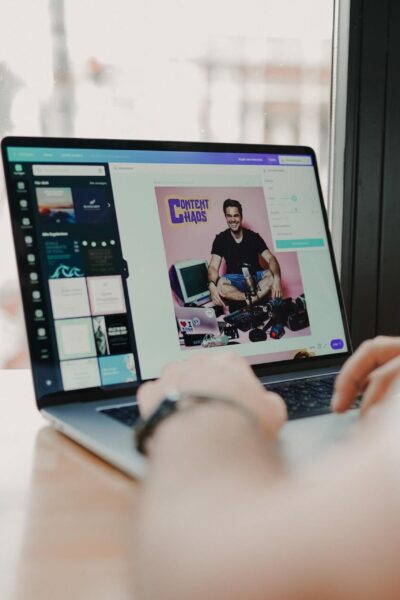Stefanie Briec, Director, Head of Demand Sales UK & INTL, FreeWheel
“Content is where I expect much of the real money will be made on the Internet, just as it was in broadcasting.”
Bill Gates made this statement as part of his “Content is King” essay in 1996, long before the rise of streaming and video on demand (VOD). The evolution of these services, however, makes his words ring truer than ever with TV now coming full circle.
Since linear TV entered most consumer households, it has delivered premium content, secured mass reach and supported consumption-based advertising. Then, with the advent of digital video, the advertising ecosystem focused on building one-to-one audience connections through cookie-enabled targeting.
Now, with third-party cookies being phased out, it looks like content-based advertising has entered the spotlight once again.
At the same time, the media and entertainment landscape has diversified. Audiences have 24/7 access to a variety of content through a plethora of devices, platforms and services — the possibilities are endless.
So, how does compelling content enable broadcasters and media owners to stay ahead of the competition and capture that “real money” from advertisers?
Advanced TV’s Value Add
Quality content has long been the foundation of TV and TV advertising. Since the 1950s, linear TV content has received ratings based on the number of eyeballs it attracts and these ratings have both defined the value of available inventory, and helped marketers create media plans.
By ensuring ads are relevant to the programmes audiences are watching, advertisers and agencies have also heightened the impact of their TV campaigns with content-based targeting.
Today, media consumption habits have expanded to encompass not only linear TV, but also streaming and VOD services such as broadcaster video on demand (BVOD), advertising-based video on demand (AVOD) and subscription-based video on demand (SVOD).
Collectively, these are known as Advanced TV.
Regardless of how or when audiences watch video, TV supposedly remains the most important screen in the household, and seems to continue offering the best viewing experience. Across all Advanced TV channels and platforms, quality content looks like the hallmark of success, as demonstrated by major streaming services continuing to expand their own content production.
Consequently, media organizations have entered a race to create high quality content that appeals to audiences. Compelling content adds value to TV ad inventory with its ability to attract relevant and engaged audiences. In turn, this maximizes ad revenue for sell-side players, which enables them to fund and further enhance their content production.
Advanced TV channels also add another important element to this dynamic — that of audience data. SVOD, BVOD and AVOD platforms, for example, are logged-in environments that deliver insight into audience preferences and the benefits this brings media organizations is multifold.
Media Owners and the Audience
Premium, logged-in video environments enable media owners to have direct relationships with their audiences. This means they have a strong understanding of what content viewers watch the most and their habits, whether that involves specific genres, formats or categories of interest, for example certain actors.
Content owners and distributors can use these audience insights to increase ad revenue. With marketers increasingly looking to create impactful, data-driven ad campaigns while respecting user privacy, media owners’ rich, opted-in first-party data is highly valuable. It enables marketers to employ more effective and tailored contextual targeting, which lets them connect with hard-to-reach yet highly engaged viewers beyond traditional TV.
Furthermore, a 2021 FreeWheel study conducted with independent research company Happydemics revealed that almost two-thirds of European consumers surveyed understand the trade-off between watching ads in exchange for free access to premium video content. This makes them more likely to be receptive to advertising on platforms such as BVOD and AVOD.
In addition, media organizations can explore viewer preferences to benefit their production plans. Audience insights unlock new opportunities for them to create quality content that gives them a competitive edge and continues to attract viewers. Increasing viewership allows media owners to deepen their insights, improving their ability to win ad budgets by supporting effective ad targeting.
More enriched insights further benefit premium content production, offering the chance to find a gap in the market and potentially appeal to audience segments that aren’t currently being catered for.
Content as a Unifier
Advanced TV comprises different platforms and services, but also includes devices from Smart TVs to set-top boxes and external devices such as TV sticks. Over time it seems that the proliferation of content-delivery methods and devices has contributed to audience fragmentation, with viewers used to trying different options that suit their viewing habits and preferences.
However, it’s important to note that what ultimately drives viewer adoption of Advanced TV channels is presumably the ability to find quality content that matches their interests, favoring those that deliver the best user experience.
The majority (60%) of European audiences surveyed use smart TVs to access primarily long-form premium video, citing the quality, TV-like experience as a key reason, according to consumer research conducted in 2022 by FreeWheel in collaboration with Happydemics.
In the battle for eye-balls, content seems to be a critical asset for media owners to maintain and grow their bottom lines, especially as 60% of marketers surveyed intend to raise their Advanced TV spend in 2022.
By attracting highly engaged viewers, content distributors should be able to provide advertisers with valuable data that can help unify their campaigns across screens, even as audience consumption patterns diversify further.
It is essential for media owners to make content the focus point of their operations. Being competitive with content production seems to attract more audiences, more data, and ultimately more ad spend, fuelling success for media organizations in a crowded video landscape.
Disclaimer: The views, opinions and ideas expressed in this post belong to the author/s and do not necessarily reflect those held by State of Digital Publishing.









